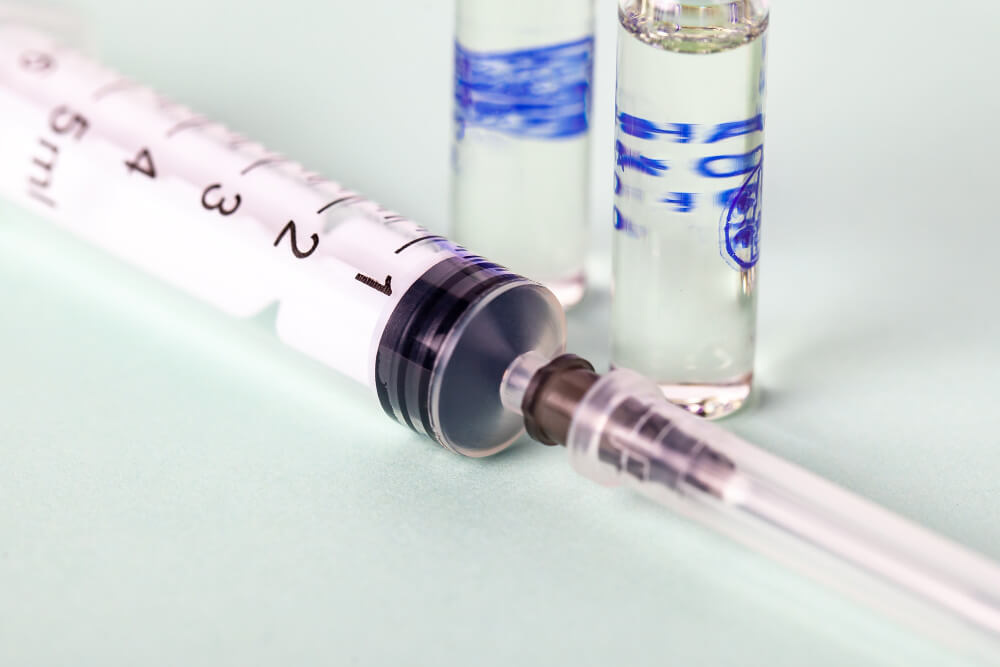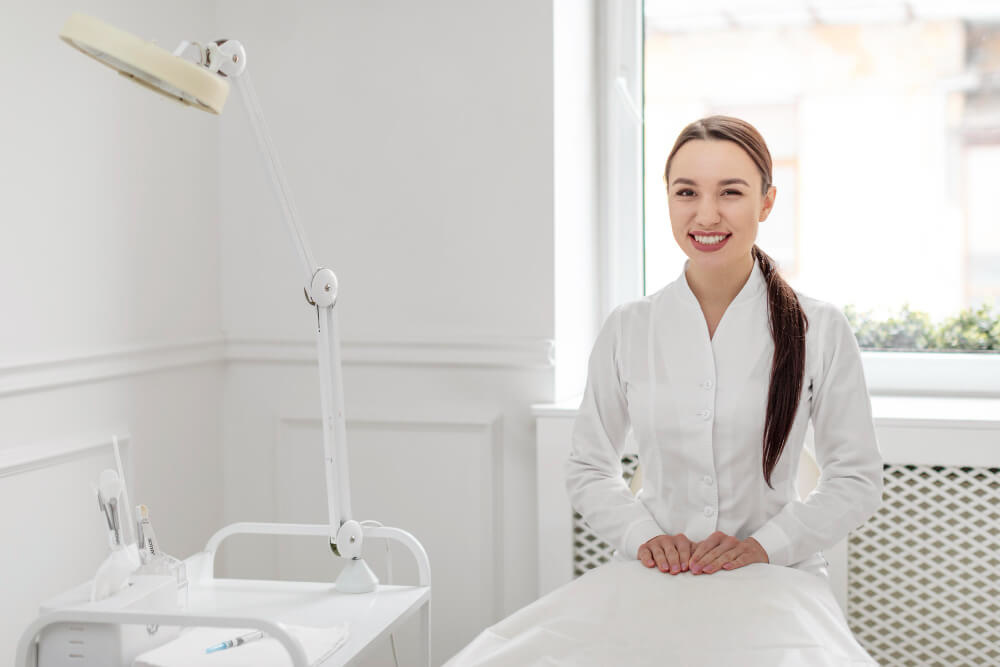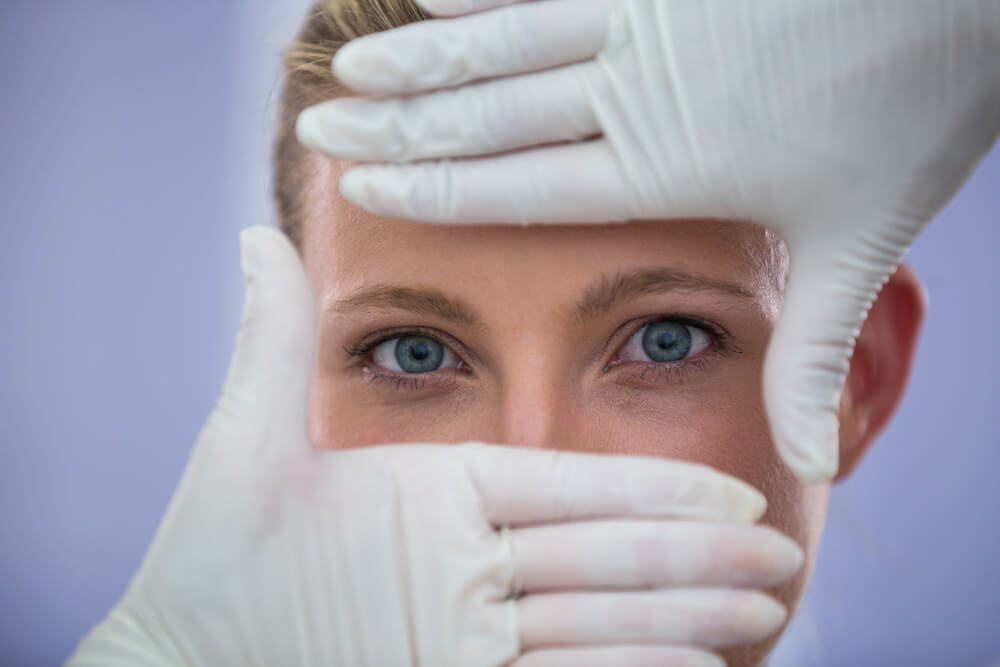The Future of Health: Why Preventative Care Training is Your Key to a Longer, Better Life
For generations, the model of healthcare has been largely reactive. We wait for symptoms to appear, a diagnosis to be made, and then we begin treatment. This approach, while often necessary, is like trying to patch a leaky roof during a rainstorm. It’s a strategy of damage control, not damage avoidance. But what if we could predict the storm, reinforce the roof, and prevent the leak from ever happening? This is the powerful promise of preventative care.
Preventative medicine is a paradigm shift, moving the focus from sickness to wellness, from treatment to optimization. It’s about understanding the intricate web of genetics, lifestyle, and environment that determines our health trajectory and making proactive choices to steer it toward a long and vibrant life. At the heart of this revolution is the need for specialized education. Comprehensive preventative care training equips both healthcare professionals and motivated individuals with the knowledge to build health, not just fight disease.
This proactive stance is more than just a philosophy; it’s a practical strategy for a better future. It involves identifying risks long before they become realities and implementing personalized plans to mitigate them. This is the new frontier of medicine, where the goal isn’t just to add years to life, but to add life to years. The journey begins with understanding the core principles that make this approach so transformative.

What Exactly is Preventative Care?
At its core, preventative care is any action taken to prevent illness or detect it at an early, more treatable stage. It’s the annual check-up, the balanced diet, the daily walk, and the screening test. It’s a comprehensive approach that views health as a state of complete physical, mental, and social well-being, not merely the absence of disease. This philosophy challenges the traditional ‘wait and see’ model by promoting proactive health management.
This isn’t just about avoiding the flu or managing cholesterol. It’s a deep dive into the root causes of chronic conditions that affect millions, such as heart disease, diabetes, and certain cancers. By focusing on the upstream factors that contribute to these illnesses, preventative care aims to stop them before they start. It empowers us to become active participants in our own health story, rather than passive recipients of a diagnosis.

What are the different types of prevention?
To better understand its scope, preventative care is often categorized into three main levels. The first is primary prevention, which aims to prevent disease or injury before it ever occurs. This includes activities that are widely recognized as healthy habits, such as eating nutritious foods, exercising regularly, and avoiding tobacco. It also encompasses immunization programs that protect against infectious diseases, creating a shield of protection for both the individual and the community.
Next is secondary prevention, which focuses on early detection and prompt treatment of disease. The goal here is to identify a health issue at its earliest, most manageable stage to slow its progress or cure it entirely. Common examples include regular blood pressure screenings, mammograms for breast cancer detection, and colonoscopies for colorectal cancer. These tools don’t prevent the initial onset but are crucial for preventing severe consequences.
Finally, tertiary prevention comes into play once a disease or condition is already established. The objective is to soften the impact of an ongoing illness or injury that has lasting effects. This involves helping people manage long-term, often complex health problems to improve their quality of life. Rehabilitation programs for stroke survivors, chronic pain management strategies, and patient support groups are all forms of tertiary prevention, focused on recovery and function.

Why has the focus shifted from treatment to prevention?
Several powerful forces are driving the shift toward a more preventative healthcare model. One of the most significant is the escalating cost of treating chronic diseases. Conditions like diabetes, heart disease, and obesity place an enormous financial burden on healthcare systems worldwide. It has become clear that investing in prevention is not only better for patient health but also far more economically sustainable than paying for expensive, long-term treatments and complications.
Another key driver is the global rise of chronic, lifestyle-related illnesses. In the past, infectious diseases were the primary health threat. Today, the biggest challenges are conditions intricately linked to our daily choices, such as what we eat, how much we move, and how we manage stress. This reality necessitates a different approach, one that addresses the root causes embedded in our lifestyles.
Furthermore, there is a growing movement of patient empowerment. People are no longer content to be passive observers in their healthcare. Armed with information from the internet, health apps, and wearable technology, individuals are seeking to take control of their well-being. They want to understand their bodies, interpret their health data, and partner with professionals who can guide them on a path to optimal health, not just treat them when they are sick.

Who Benefits from Preventative Care Training?
Specialized training in preventative care offers profound benefits to a wide range of people, from seasoned medical doctors to individuals simply passionate about their own health. The knowledge gained creates a ripple effect, improving patient outcomes, enhancing professional careers, and empowering communities to build a healthier future. It’s an investment in a skill set that is rapidly becoming essential in the modern health landscape.
For those within the healthcare field, this training opens up new avenues for patient care and professional growth. For the general public, it provides the tools to navigate a complex health world and make truly informed decisions. The impact is both personal and professional, transforming how we think about and manage health on every level.

How does it help healthcare professionals?
For doctors, nurses, and other clinicians, preventative care training is a game-changer. It allows them to move beyond the constraints of conventional medicine, which often focuses on managing symptoms with prescriptions. Instead, they learn to identify and address the underlying dysfunctions that lead to disease, using tools like advanced diagnostics, nutritional science, and lifestyle coaching.
This proactive approach leads to demonstrably better patient outcomes and higher levels of patient satisfaction. When patients feel heard and are given a clear, personalized roadmap to better health, they become more engaged and compliant. This shift also brings immense professional satisfaction to clinicians, who can witness genuine, lasting transformations in their patients’ lives, which is often the reason they entered the medical field in the first place.
Moreover, integrating preventative and functional medicine into a practice can create new, sustainable revenue streams that are less dependent on insurance reimbursement. It positions a clinic or professional as a forward-thinking leader in the community, attracting patients who are actively seeking a more holistic and personalized approach to their health and longevity.

How does it empower individuals?
For individuals outside the medical profession, preventative care training is the ultimate form of self-empowerment. It demystifies the human body and the factors that influence health. It teaches you how to read and understand your own biology through biomarkers, genetic information, and data from wearable devices. This knowledge transforms you from a passenger to the pilot of your own health journey.
Instead of relying on generalized advice, you learn to understand what your unique body needs. You gain the confidence to ask insightful questions of your healthcare providers and to advocate for yourself. You learn how to critically evaluate health trends and fads, separating evidence-based strategies from marketing hype. This education provides a framework for making daily choices that compound over time to build resilience and vitality.
Ultimately, this training gives you the ability to architect a life designed for wellness. It’s about understanding the profound impact of nutrition, sleep, exercise, and stress on your long-term health and having the skills to optimize each of these areas. This is not about restriction or deprivation; it’s about making informed, positive choices that lead to a more energetic and fulfilling life.

What Core Concepts are Taught in Preventative Medicine?
The curriculum of a robust preventative medicine program is both broad and deep, covering the science and application of health optimization. It moves beyond basic health advice to provide a sophisticated understanding of human physiology and the interventions that can enhance it. The training integrates cutting-edge science with practical, real-world strategies.
From the cellular level to whole-body systems, students learn how to assess, analyze, and intervene to promote health. This involves mastering new diagnostic tools, understanding the biochemical impact of lifestyle choices, and developing personalized protocols for a diverse range of individuals and health goals. The focus is on creating a comprehensive, systems-based approach to wellness.

How is nutrition and lifestyle addressed?
Nutrition in preventative medicine goes far beyond the traditional food pyramid. It’s a field known as functional nutrition, which views food as information that communicates directly with our genes and cells. Training covers how different dietary strategies can be used to reduce inflammation, balance hormones, support detoxification, and optimize metabolic function. It’s about creating personalized nutrition plans based on an individual’s unique biochemistry and health goals.
Lifestyle is the other cornerstone. This includes a scientific approach to exercise, detailing how different types and intensities of physical activity impact everything from cardiovascular health to cognitive function. It also places a heavy emphasis on sleep hygiene and stress management, recognizing these as non-negotiable pillars of health. Students learn practical techniques, such as mindfulness, breathwork, and behavioral strategies, to help patients restore balance in these critical areas.
These principles are especially vital in managing complex chronic conditions. For instance, a deep understanding of metabolic health and hormonal balance is crucial for the advanced management of polycystic ovary syndrome PCOS, a condition where lifestyle interventions can have a profound impact.

What role do diagnostics and biomarkers play?
Preventative medicine relies heavily on data to create a clear picture of an individual’s health status. This goes far beyond a standard cholesterol panel. Advanced diagnostic testing provides a granular view of a person’s physiology, revealing potential issues long before they would manifest as symptoms. This can include comprehensive hormonal panels, in-depth analysis of inflammatory markers, tests for nutrient deficiencies, and assessments of gut health through microbiome analysis.
Biomarkers, or biological markers, are the measurable indicators of this analysis. Training focuses on how to interpret this vast amount of data in the context of a person’s overall health, genetics, and lifestyle. It also incorporates data from wearable technology, such as sleep trackers and continuous glucose monitors, to get a real-time understanding of how daily choices affect biology. This data-driven approach allows for incredibly precise and personalized health interventions.

Why is certification important for physicians?
For medical professionals, pursuing formal certification is a critical step in effectively and safely practicing preventative medicine. It provides a structured, evidence-based framework that builds upon their existing medical knowledge. A dedicated preventative medicine certification for primary care physicians ensures that they are trained to the highest standard in this specialized field.
Certification signifies a commitment to excellence and a mastery of the core competencies of preventative care. It provides credibility and reassures patients that their physician has undergone rigorous training in areas like functional nutrition, advanced diagnostics, and lifestyle medicine. It also equips doctors with the confidence and the specific protocols needed to integrate these new services into their practice successfully and ethically.

What does a specialized fellowship involve?
For those seeking the highest level of expertise, a fellowship in preventative or anti-aging medicine offers an immersive and comprehensive educational experience. A fellowship goes deeper than a certification course, often involving more extensive clinical application, research, and mentorship. The curriculum for a preventative medicine fellowship is designed to create true leaders and innovators in the field.
Fellows typically engage in a detailed study of complex topics like clinical genomics, bioidentical hormone replacement therapy, environmental toxicology, and the mechanisms of aging itself. They learn to manage complex patient cases and often contribute to the growing body of research that supports this medical specialty. Completing a fellowship positions a clinician as a top-tier expert capable of pushing the boundaries of what is possible in health optimization and longevity.

How is Regenerative Medicine Revolutionizing Prevention?
While lifestyle and nutrition form the foundation of preventative health, a new and exciting field is emerging that promises to take prevention to an entirely new level: regenerative medicine. This area of science is not just about slowing down damage; it’s about actively repairing and rejuvenating the body at a cellular level. It represents one of the most exciting frontiers in the quest for a longer, healthier life.
Regenerative medicine holds the potential to address age-related decline and injury in ways that were once the stuff of science fiction. By harnessing the body’s own innate healing mechanisms, these therapies aim to restore youthful function to aging tissues and organs. This aligns perfectly with the proactive ethos of preventative care, offering powerful new tools for maintaining health over a lifetime.

What is regenerative medicine?
Regenerative medicine is a branch of translational research that focuses on the process of replacing, engineering, or regenerating human cells, tissues, or organs to restore normal function. It is a field that brings together experts from biology, chemistry, computer science, engineering, and medicine to find solutions to some of the most challenging medical problems. The core idea is to harness the body’s power to heal itself.
Instead of using medications to manage symptoms, regenerative therapies aim to get to the source of the problem by repairing the damaged tissue itself. This could involve stimulating previously irreparable organs to heal themselves or using laboratory-grown tissues to replace damaged ones. To understand the basics of this cutting-edge field, it is helpful to explore foundational resources that explain regenerative medicine what it is and how it works in an accessible way.

What is the role of stem cells in this field?
At the very heart of regenerative medicine are stem cells. These are unique cells within the body that have the remarkable potential to develop into many different cell types, from muscle cells to brain cells. In many tissues, they serve as a sort of internal repair system, dividing essentially without limit to replenish other cells as long as the person is still alive. The versatility of stem cells makes them a focal point of intense research and a powerful tool for regeneration.
When a stem cell divides, each new cell has the potential either to remain a stem cell or become another type of cell with a more specialized function, such as a red blood cell, a heart muscle cell, or a neuron. Scientists are exploring how to guide stem cells to become specific cell types, which could then be used to repair damaged tissues in the body. This could offer hope for conditions like Parkinson’s disease, spinal cord injury, and heart disease.

How are scientists and clinicians collaborating?
The rapid advancement of regenerative medicine is only possible through intense global collaboration. Organizations and societies play a crucial role in bringing together the brightest minds to share research, establish ethical guidelines, and translate laboratory discoveries into clinical therapies. These groups foster the interdisciplinary cooperation needed to move the field forward responsibly.
Prominent bodies like the International Society for Stem Cell Research provide a global forum for stem cell researchers to connect and share their findings, ensuring that the science remains rigorous and collaborative. Similarly, foundations are vital for advocacy and public education. The Regenerative Medicine Foundation works to accelerate the development of new therapies by bringing together stakeholders from academia, industry, and government.

What are some examples of regenerative therapies?
While many regenerative therapies are still in the experimental stages, some are already being used in clinical practice to promote healing and reduce inflammation. Platelet-Rich Plasma, or PRP, therapy involves concentrating platelets from a patient’s own blood and injecting them into an injured area, such as a joint or tendon, to accelerate healing. It’s a popular treatment in sports medicine for its ability to repair tissue damage.
Another emerging area is the use of exosomes, which are tiny vesicles released by cells that carry genetic information and proteins to other cells, acting as messengers. Exosome therapy aims to use these messengers to signal a regenerative response in target tissues. These and other therapies represent the practical application of regenerative principles, offering a glimpse into a future where repair and rejuvenation are standard parts of preventative healthcare.

How Can You Integrate Preventative Principles into Your Life?
Embracing preventative care doesn’t require a medical degree or a complete life overhaul overnight. It’s about making a conscious decision to prioritize your long-term health and taking small, consistent steps in the right direction. The journey begins with curiosity and a commitment to understanding your own body better.
Integrating these principles is a gradual process of building healthy habits that compound over time. By focusing on foundational pillars and seeking the right guidance, anyone can begin to shift their health trajectory toward greater vitality and resilience. It’s a proactive investment in your future self.

Where should you start?
The best place to start is with the fundamentals, often referred to as the non-negotiables of health. Before exploring advanced supplements or complex biohacks, ensure your foundation is solid. This means prioritizing consistent, high-quality sleep, as it is during sleep that your body performs most of its repair and recovery processes. Aim for 7-9 hours per night in a dark, cool room.
Next, focus on your nutrition. Start by reducing or eliminating processed foods, sugary drinks, and industrial seed oils. Replace them with whole, nutrient-dense foods like vegetables, fruits, high-quality proteins, and healthy fats. Finally, incorporate regular movement into your day. This doesn’t have to be intense gym sessions; a daily brisk walk, some stretching, and taking the stairs are all powerful starting points.

How can you find a qualified professional?
As you progress on your health journey, you may want to partner with a healthcare professional who specializes in preventative and functional medicine. When looking for a provider, ask about their training and approach. Look for clinicians who have completed certifications or fellowships in the field, as this indicates a deeper level of expertise.
A qualified professional will take the time to listen to your health history and goals. They will likely recommend advanced diagnostic testing to get a baseline of your health and will co-create a personalized plan with you that includes diet, lifestyle, and other interventions. They should act as a coach and a partner, empowering you with knowledge and supporting you along the way.

What does the future of personalized prevention look like?
The future of preventative care is incredibly exciting and deeply personal. Advances in technology are making it possible to create health plans with unprecedented precision. Artificial intelligence will be able to analyze vast amounts of data from your genetics, blood work, and wearable devices to predict your risk for certain conditions and recommend highly specific interventions.
Continuous monitoring will become more common, with biosensors providing real-time feedback on blood sugar, inflammation, and other key biomarkers. This will allow for immediate adjustments to your lifestyle to keep you in an optimal state of health. The world of ‘biohacking’, or using science and technology to optimize your biology, will become more accessible, empowering everyone to take a data-driven approach to their well-being. The ultimate goal is a future where healthcare is truly predictive, personalized, participatory, and preventative.
Frequently Asked Questions

Who is the primary audience for training on cognitive decline, and is it beneficial for non-professionals?
This training is primarily designed for healthcare professionals who are on the front lines of patient care, including primary care physicians, nurses, geriatric specialists, and social workers. For these professionals, the training provides essential skills to integrate cognitive screening into routine appointments and recognize subtle, early signs of decline that might otherwise be overlooked. It equips them to initiate conversations with patients and their families, leading to earlier diagnosis and intervention.
However, the training is also incredibly valuable for non-professionals, particularly family caregivers and individuals proactive about their own brain health. For caregivers, it provides the knowledge to better understand the changes they are observing in a loved one and advocate more effectively for their care. This knowledge can reduce stress and empower them to partner with medical teams, ensuring a more holistic approach to managing the condition.

What is the evidence supporting the effectiveness of this training for real-world outcomes?
The evidence strongly indicates that targeted training significantly improves a professional’s ability to detect cognitive decline at its earliest stages. Studies show that trained practitioners are more confident and accurate in using validated screening tools and interpreting their results. This leads directly to a higher rate of timely referrals for comprehensive neuropsychological evaluation, which is critical for an accurate diagnosis.
These improved detection rates translate into tangible real-world outcomes for patients. Early diagnosis allows for the prompt implementation of interventions that can help manage symptoms and potentially slow the progression of the underlying disease. This includes initiating lifestyle modifications, managing vascular risk factors, and engaging in cognitive rehabilitation, all of which can enhance an individual’s quality of life and help them maintain independence for longer.

Beyond identifying symptoms, what practical prevention strategies are typically taught in these training programs?
These training programs move beyond mere detection and place a strong emphasis on actionable prevention strategies grounded in scientific research. Participants learn about the pillars of brain health, including the profound impact of regular physical activity and a nutrient-rich diet, such as the Mediterranean or MIND diet. The curriculum details how to counsel patients on managing cardiovascular risk factors like high blood pressure and cholesterol, as these are directly linked to cognitive vitality.
Furthermore, the training covers the critical importance of cognitive and social engagement as a protective measure. It provides frameworks for encouraging mentally stimulating activities, lifelong learning, and the maintenance of strong social networks to build cognitive reserve. Modules also frequently address other crucial lifestyle factors, such as the role of quality sleep in memory consolidation and the use of stress-management techniques to mitigate the harmful effects of chronic stress on the brain.
Discover the most comprehensive functional medicine training, longevity training, and biohacking certification programs designed specifically for healthcare professionals, medics, and clinic owners who want to master regenerative medicine protocols and anti-aging therapies.







